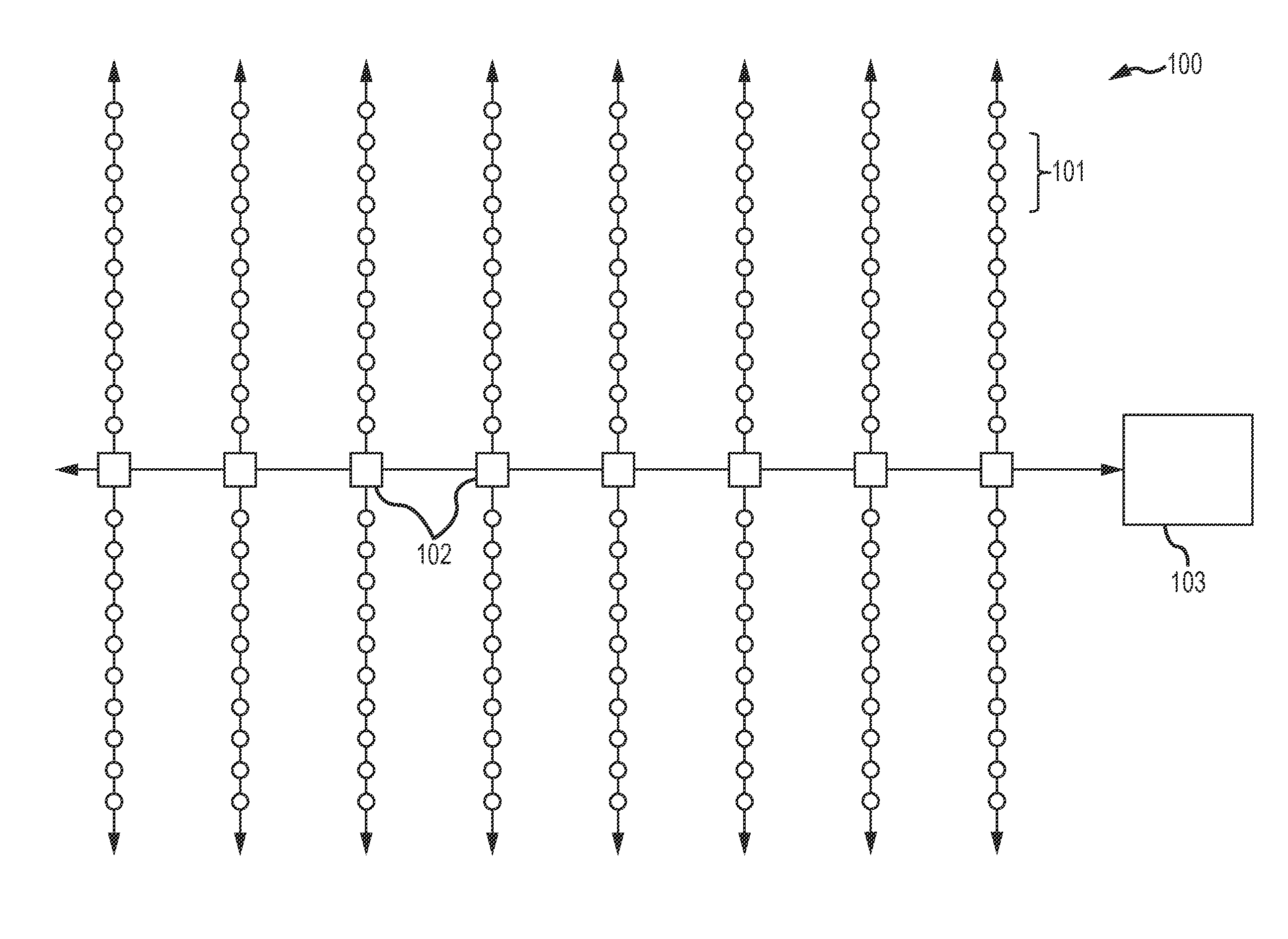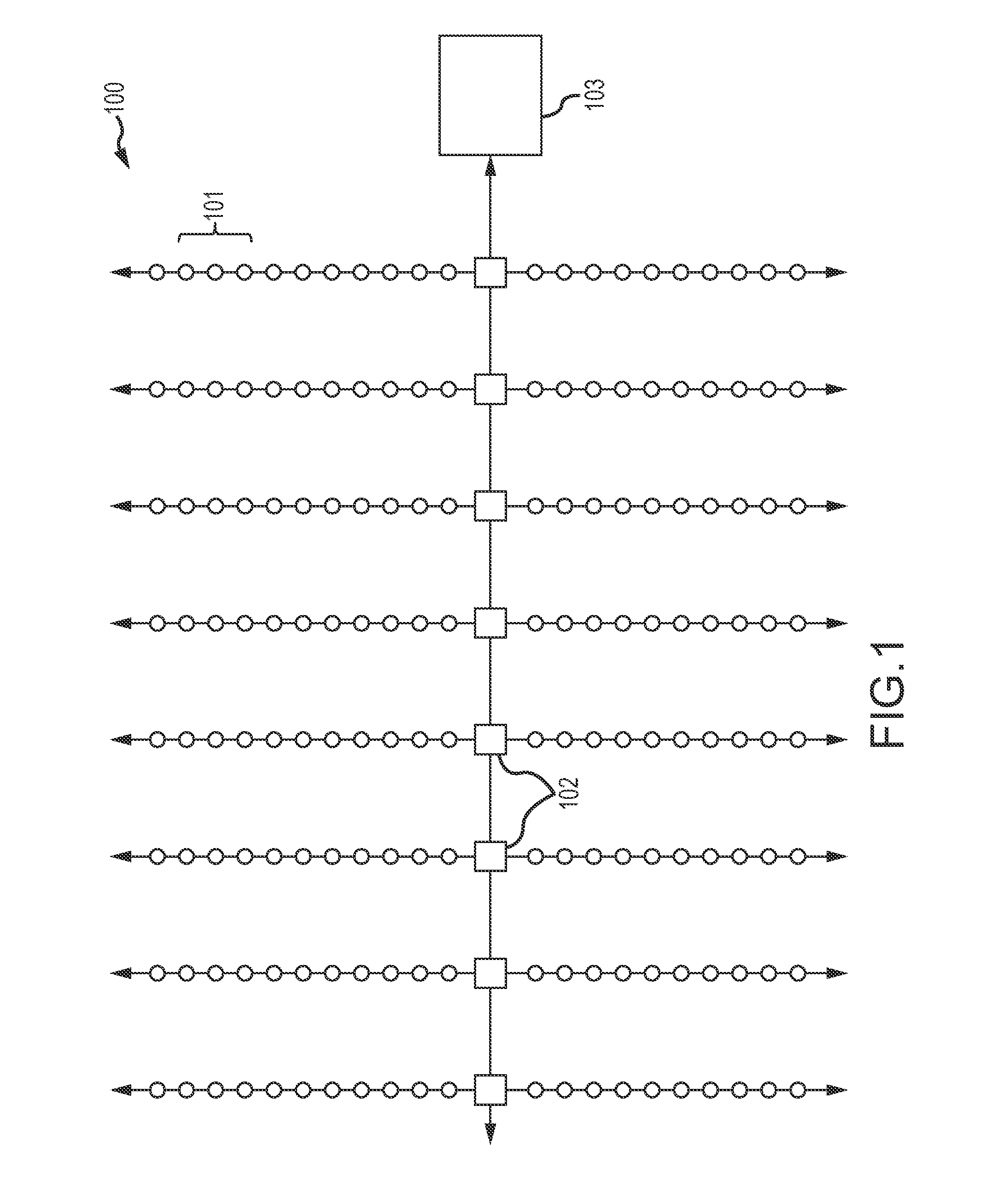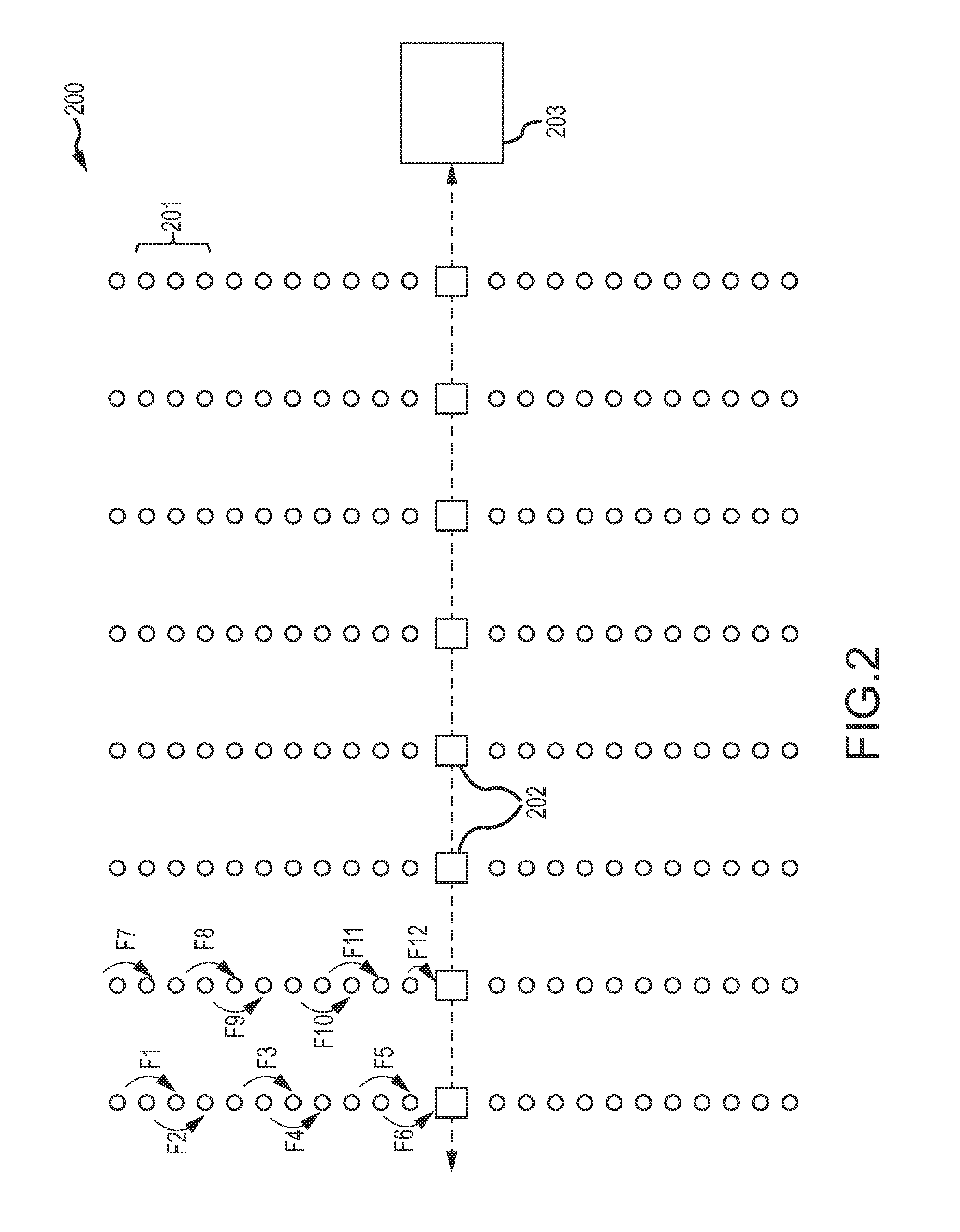Multimode seismic survey system
a seismic survey and multi-mode technology, applied in seismicology, instruments, measurement devices, etc., can solve the problems of blindness of seismic surveys, and achieve the effects of reducing memory capacity requirements, reducing labor, and simplifying data collection
- Summary
- Abstract
- Description
- Claims
- Application Information
AI Technical Summary
Benefits of technology
Problems solved by technology
Method used
Image
Examples
Embodiment Construction
[0037]In the following description, the invention is set forth is the context of various seismic units and seismic array systems relating to use of different readout modes for reading out seismic data, e.g., using different modes sequentially in a survey, using different modes in different surveys, operating individual seismic units in different modes simultaneously, and operating individual seismic units in different modes at different times. While a variety of examples are included, it will be appreciated that many other contexts and use cases are possible. Accordingly, the following description should be understood as illustrating various aspects of the invention and not by way of limitation.
[0038]The description is divided into a number of sections. The first section introduces some of the principal output modes and examples of arrays that can be used in practicing the invention. Thereafter, various multimode contexts are described. The subsequent sections describe, in turn, var...
PUM
 Login to View More
Login to View More Abstract
Description
Claims
Application Information
 Login to View More
Login to View More - R&D
- Intellectual Property
- Life Sciences
- Materials
- Tech Scout
- Unparalleled Data Quality
- Higher Quality Content
- 60% Fewer Hallucinations
Browse by: Latest US Patents, China's latest patents, Technical Efficacy Thesaurus, Application Domain, Technology Topic, Popular Technical Reports.
© 2025 PatSnap. All rights reserved.Legal|Privacy policy|Modern Slavery Act Transparency Statement|Sitemap|About US| Contact US: help@patsnap.com



